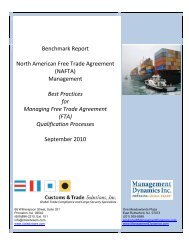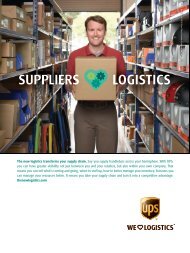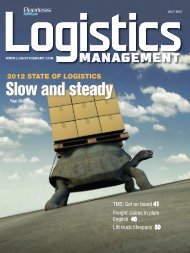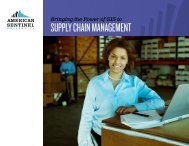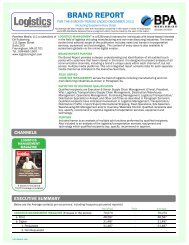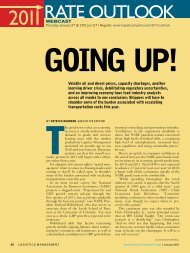Logistics Management - June 2010
Logistics Management - June 2010
Logistics Management - June 2010
You also want an ePaper? Increase the reach of your titles
YUMPU automatically turns print PDFs into web optimized ePapers that Google loves.
Distribution Network Redesign<br />
warehouse & Dc<br />
Kansas City SmartPort is an example of an inland port alternative. It’s located at the intersection of three of the<br />
nation’s major interstate highways (I-35, I-70, I-29) and offers a wide range of intermodal opportunities.<br />
defines an inland port as: “A physical<br />
site located away from traditional<br />
land, air, and coastal borders with<br />
the vision to facilitate and process<br />
international trade through strategic<br />
investment in multi-modal transportation<br />
assets and by promoting valueadded<br />
services as goods move through<br />
the supply chain.”<br />
“They’re trying to get containers away<br />
from the seaports themselves where the<br />
real estate is more costly, there’s more<br />
congestion, and where the labor rates<br />
are higher,” says West. Inland ports are<br />
typically more centrally located leading<br />
to shorter trucking distances to DCs in<br />
the network while offering more intermodal<br />
opportunities, thus reducing<br />
transportation costs.<br />
Tip #6: Create an off-shore,<br />
on-shore, near-shore blend<br />
for flexibility<br />
TranSystems’ West cites rising labor<br />
costs, lack of quality control, and political<br />
instability in off-shore manufacturing<br />
sites—coupled with<br />
an anticipation of rising fuel<br />
prices—as some of the major<br />
reasons why many operations<br />
are coming back to North America (onshore)<br />
or to Latin America (near-shore).<br />
Managers need to look at the total<br />
landed costs by customer segment and<br />
the appropriate service level required<br />
by that segment to determine which<br />
approach for locating production is best<br />
in a post-recession economy. It may<br />
very well be a combination of all three.<br />
First, the bad news: Chainalytic’s<br />
Metersky believes that over the next<br />
few years there’s actually not going to<br />
be enough capacity—especially in the<br />
truckload market. “With more demand<br />
and less supply, transportation rates are<br />
going to go back up again,” he adds.<br />
Now, the good news: According to<br />
West, seems to be more of a collaborative<br />
effort among trading partners “to<br />
share information to reduce costs as<br />
seen in the case of freight exchanges.”<br />
The temptation to wait and see how<br />
the economy progresses can be great;<br />
however, according to our experts, the<br />
companies that will thrive are those<br />
now taking advantage of the recession’s<br />
low real estate rates. M<br />
—Maida Napolitano is a Contributing<br />
Editor to <strong>Logistics</strong> <strong>Management</strong><br />
<strong>June</strong> <strong>2010</strong> | WWW.LOGISTICSMGMT.COM <strong>Logistics</strong> <strong>Management</strong> 45




